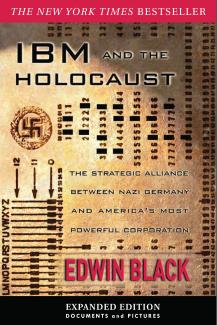-
Beyond disputeChristopher SimpsonWashington Post Book World
-
Copiously documented caseRichard BernsteinThe New York Times
-
A shocking conclusionSimon WiesenthalDirector, JDC, Vienna, Austria
-
Explosive; stunningMichael HirshNewsweek
-
ShockingJack BeattyThe Atlantic
-
Exhaustive researchSam JaffeBusinessweek
-
Exhaustive research, undeniable factRobert UrekewHarvard International Review
-
Watson, a master of subterfugeGordon A. CraigNew York Review of Books
-
A wealth of unknown detailsSaul FriedlanderLos Angeles Times
-
DisturbingRon GrossmanChicago Tribune
-
ProdigiousJack FischelPhiladelphia Inquirer
-
ShockingRobert UrekewMidstream
-
AmbitiousJohn FriedmanThe Nation
-
InsightfulTerry W. HartleChristian Science Monitor
-
Excrutiatingly documentedKaren SandstromCleveland Plain Dealer
-
IrrefutableJohn Mark EberhartMilwaukee Journal Sentinel
-
A chilling lessonRichard PachterMiami Herald
-
An empirical statementLouisville Courier-Journal
-
Exposes horrific detailsCharles WinecoffEntertainment Weekly
-
A corporate nightmareSunday Times
-
A distinctive contributionPeter PrestonThe Guardian
-
MeticulousChristian HabbeDer Spiegel
-
Unveils cherished mythsMarilyn HenryJerusalem Post
-
Frighteningly relevantDouglas PerryFort Worth Star-Telegram
-
Tenacious, originalAnthony SebokCNN
-
Must be readAbraham H. FoxmanNational Director, Anti-Defamation League
-
UndeniableMalcolm HoenleinExecutive Vice Chairman, Conference of Presidents of Major American Jewish Organizations
-
GroundbreakingFranciszek PiperHistorian, Auschwitz-Birkenau State Museum
